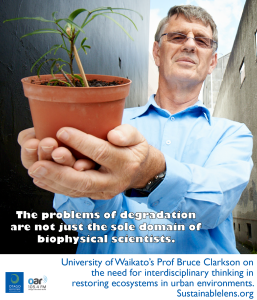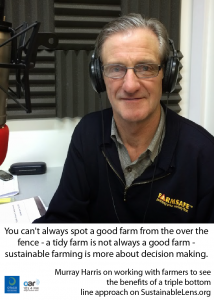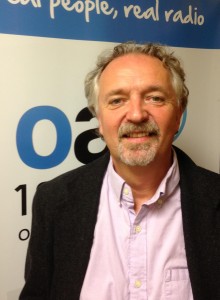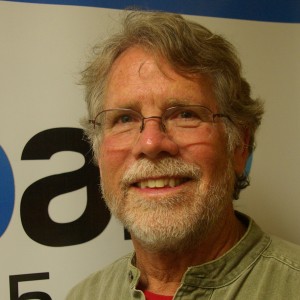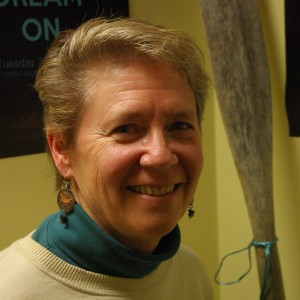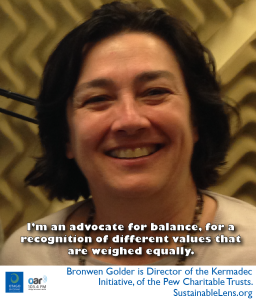
I’m an advocate for balance, for a recognition of different values that are weighed equally. An advocate for cultural and environmental values that are considered equal to economic values.
Bronwen Golder is Director of the Kermadec Initiative, part of the Global Oceans Legacy programme of the Pew Charitable Trusts. Bronwen worked as a corporate banker in New York, then spent 20 years working internationally for WWF before returning home New Zealand to lead the campaign for the Kermadec Ocean Sanctuary.
Talking points
The Kermadecs is an extraordinary underwater world, and the wonder of it is that it is basically untouched, near pristine. Too often in the conservation community we talk of conservation battles – protecting the last of a habitat, or the last of a species, and the Kermadecs is one of those places that is untouched – it gives us the opportunity to pursue a campaign that’s about the conservation of celebration, positive conservation to protect areas that are there as they have been for a very long time. Those undisturbed spaces are increasingly precious.
We have a changing baseline – the more and more we disturb it, the more we think that’s normal.
Because in the ocean environment we have these areas that are essentially untouched at scale, they function at scale – as healthy systems.
The minute you start to erode that scale or healthy system you start to erode the whole system.
It’s an incredible opportunity to do something positive in the conservation sphere.
I’d hate to be here in 20 years…saying we’re trying to protect the last 10% of the Kermadec marine ecosystem.
I’d hate for future generations not to have any fish to eat because our oceans have become unproductive.
(what did you learn as a banker) The skills about how do you assess risk, and what are the questions that you should be asking based on the information that you have, a level of critical thinking….you make a recommendation, and that recommendation can have risk lying within it, but you have to be confident that you can manage that risk.
Ethics is what you bring as an individual to the work that you do. You always bring that personal lens.
A lot of the economic development work ended up being connected to the environment. People such as the Yellow Eyed Penguin Trust, those people who 25 years ago looked at their local environment, identifying the things that were really special.
Ecoregion planning – planning at the scale of ecosystems.
My most rewarding time at WWF was seeing change happen – when you help to make change happen.
One of the things I’m most proud is of is designing and developing an approach to conservation planning and implementation, change makers…bringing together a group of people and thinking about what do we aspire to, then working to identify what we need to trigger, what are the the things we needed to leverage on the way to achieving that goal.
Working with colleagues and stakeholders to really leverage change, and to inspire change. Because those are the things that over the long term are sustainable. Those are the things that people buy into, and they sustain beyond you.
I often thought that my job was to become unnecessary. And that process was absolutely formulated around the idea that we inspired others to embrace the conservation agenda.
The Kermadecs will be a sanctuary for our children, and their children. To help form and reinforce their ethics, their sense of a healthy planet.
We have two values systems challenging each other. One is we have this near pristine marine environment, and we should be celebrating it as a natural space, protecting it for nature and for science and to ensure we have healthy oceans. The other is we need to grow our economy, there are minerals there, we don’t know how much, but it’s important that we find out. There’s a cultural clash there.
I’m not anti-exploration, I’m not anti economic development in the marine environment, our campaign has never been against anything. What I would argue is that there are areas of our ocean space that should be protected. And there are areas that should become a negotiated space.
We should be looking at full protection of a meaningful percentage of our marine space.
We haven’t been able to break through the sense that we should be looking for what we can exploit before we look at what we can protect. I think some levels of protection have to come first.
We’re looking for leadership from government, a recognition that management of our ocean does include protecting some of those places, in perpetuity from any form of destructive activity.
If there are activities that are going to disturb other areas of similar environment, it’s actually more acceptable if some of that area is protected.
I find the dialogue with industry at the moment a very constructive one, because from both sides – from the conservation side and on the extraction side – we’re recognising that the balance is not right. Because we don’t have balance, neither use – a protective use, or an extractive use – is being sanctioned.
(Letters to George) Getting people to think about really is that they want the next generation to find when we’ve all left.
What is the planet that we leave them? and what are the messages that we leave them with so that they take it on for the next generation?
Whether we fish our ocean or whether we protect it, we all have the same level of responsibility and accountability for what we leave.
I asked them to dream a little.
When you can bring science together with community, together with government, together with industry, to work towards a vision, that’s a very powerful thing.
What keeps me awake at night, is why don’t we seem to have that national vision, that commitment to something extraordinary that the generation of 2050 can inherit? Why aren’t we having that conversation about our ocean space? Why is our ocean space just a conversation about conflict? Why do we have a polarisation between those who want to extract resources and those who want to protect it, rather than a collective vision for our marine environment?
I’ve been intent within the Kermadec campaign to focus on the positive. To focus on celebrating a really special place.
(Motivation?) George. The next generation, and the one after that, and the one after that.
(Activist?) I’m an advocate for balance, for a recognition of different values that are weighed equally. An advocate for cultural and environmental values that are considered equal to economic values.
(Challenge?) There’s an awful lot of hope, how do we bring that together so that we really light the fire?
(Miracle?) Prime Minister convenes a forum of top ocean thinkers and stakeholders, and say “you have six months to come up with a plan that recognises and respects all values of our society in terms of this ocean space”. Then tomorrow he can create the Kermadec Ocean Sanctuary.
(Advice for listeners?) To be involved. To care enough to have a voice. We’re all making changes, but sometimes we forget that protecting the environment is part of the sustainability equation. Advocating for nature within our political environment is a really important thing. Nature needs a louder voice.
 Shane Gallagher and Samuel Mann with Tahu Mackenzie and Harvey Penfold [ 54:28 ] Play Now | Play in Popup | Download
Shane Gallagher and Samuel Mann with Tahu Mackenzie and Harvey Penfold [ 54:28 ] Play Now | Play in Popup | Download
